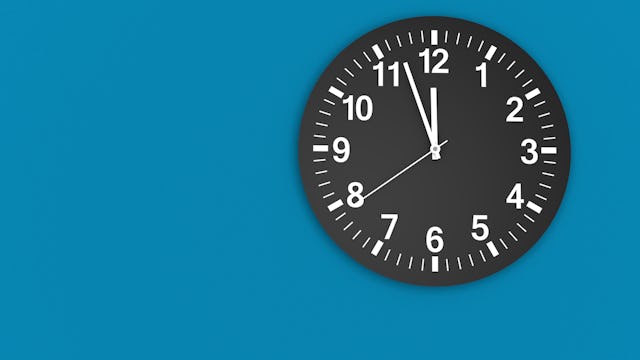Schools Are Ditching Analog Clocks Because Kids Can't Read Them

Schools in the UK are replacing analog clocks with digital because kids can’t read them
Kids these days. They might be changing the world by fighting for better gun laws and inventing amazing things, but they also can’t write in cursive, hold a pencil, or read analog clocks.
That’s right — schools in the UK are tossing their analog clocks because kids have no damn idea how to tell time by looking at them. In this digital age, it appears to be one more skill becoming somewhat obsolete. Malcolm Trobe, deputy general secretary at the Association of School and College Leaders, tells The Telegraph that modern kids aren’t so into learning about the hour and minute hand. “The current generation aren’t as good at reading the traditional clock face as older generations,” he says.
I mean, not only is that not hard to believe, it’s kind of our fault, isn’t it? “They are used to seeing a digital representation of time on their phone, on their computer. Nearly everything they’ve got is digital so youngsters are just exposed to time being given digitally everywhere,” he says.
And since kids don’t usually have an independent source of income, where are all those digital devices coming from? Us parents and also, the very grandparents who will undoubtedly whine that “kids these days” just aren’t doing life right because they can’t sign their name in cursive or read the dang clock on the wall.
The reason the clocks need to go is totally perfunctory; kids need to know how much time is left while taking exams and if they can’t accurately read an analog clock, that means lots of hands going up to ask the teachers how long they have to finish. Trobe says they’re just trying to make the test-taking process “as easy and straightforward as possible.”
“Schools will inevitably be doing their best to make young children feel as relaxed as the can be. There is actually a big advantage in using digital clocks in exam rooms because it is much less easy to mistake a time on a digital clock when you are working against time,” says Trobe.
But not all adults are as reasonable and understanding. A quick perusal of a Facebook comments section on the topic shows plenty of Olds think this means we’re heading to hell in a hand-basket. “It’s amazing what they aren’t being taught anymore. They can’t tell time, they can’t read or write cursive, history is no longer taught. Math is a common core joke,” writes one concerned citizen.
People are like, really upset about this, y’all.
But also? I doubt any of these older folks know the first thing about coding or how to spot actual fake news, both subjects my elementary-aged kids are pretty well-versed in. Times they are a changin’ and much like phones with cords, pagers, acid-washed denim, VCRs, and bad perms, other outmoded ways of doing things are falling by the wayside. There’s an easier way to tell the time, so why continue forcing kids to do it the old-fashioned way?
Trobe says, “It may be a little sad if youngsters coming through aren’t able to tell the time on clock faces.” Yes, it’s kind of sad, but also, we have to face reality.
I have been working with my third grader on telling time with an analog clock and although he understands it, I have to admit — we don’t have a single analog clock in our home. The microwave, oven, coffee maker, alarm clocks, phones, tablets, and computers all have digital readouts — so although I understand that he needs to learn analog, his day-to-day life rarely requires him to read an actual clock face. If it’s taught in the elementary grades and then never again, it’s easy to see how high school students who carry around iPhones all day could’ve forgotten the skill.
Trobe understands this fact and hopefully, other school administrators will be similarly realistic.
“One hopes that we will be teaching youngsters to read clocks, however we can see the benefit of digital clocks in exam rooms.”
This article was originally published on